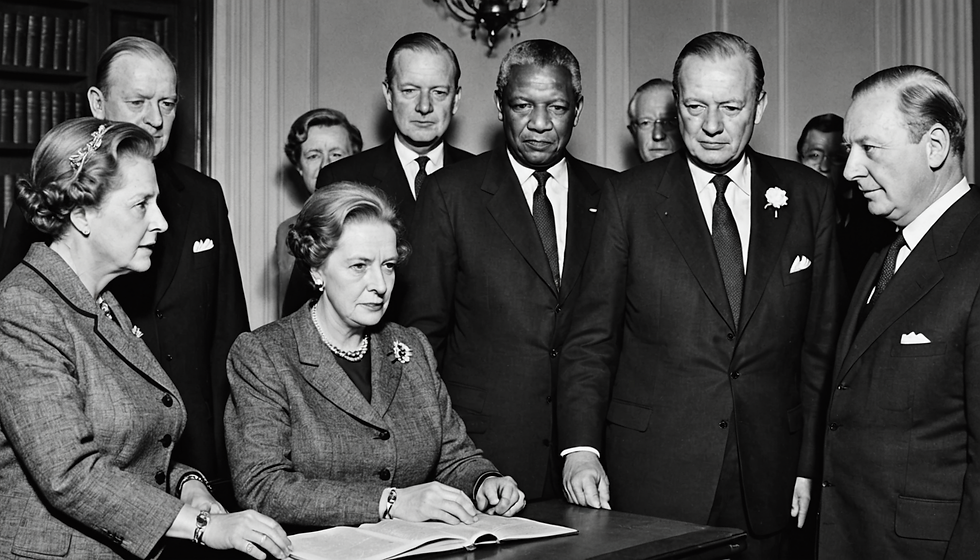Superleaders: How they drive results
- R.M. Boylan

- May 23
- 3 min read
Updated: Jun 30
By: Rose-Marie Boylan, BSc. M.A. Master's in Leadership Studies

"Life begins at the end of your comfort zone."
Neale Donald Walsch
Definition of "Superleaders"
The term "superleader" was popularized by Charles C. Manz and Henry P. Sims in their work on self-leadership and empowerment. Superleaders are characterized by their ability to inspire and empower others to lead themselves rather than relying on traditional authoritative leadership styles. They focus on developing the potential of their followers, fostering a culture of shared leadership, and promoting self-management among team members.
Characteristics of Superleaders
Superleaders exhibit a range of skills, traits, and values that distinguish them from traditional authoritative leaders. Some of these include:
Empowerment: Superleaders empower their followers by encouraging autonomy and self-direction.
Emotional Intelligence: They possess high emotional intelligence, allowing them to understand and manage their own emotions and those of others.
Visionary Thinking: Superleaders have a clear vision and can communicate it effectively, inspiring others to work towards shared goals.
Adaptability: They are flexible and can adjust their leadership style to meet the needs of their followers and the situation.
Collaboration: Superleaders foster a collaborative environment, valuing input from team members and encouraging teamwork.
Comparison with Traditional Authoritative Leadership
Traditional authoritative leadership models often rely on hard power, force, and authority to achieve compliance and results. In contrast, superleaders utilize soft power, which is based on influence, inspiration, and personal connections. The following skills, traits, and values are often lacking in traditional models:
Communication Skills: Traditional leaders may not prioritize open communication, leading to a disconnect with followers.
Trust Building: Authoritative leaders may struggle to build trust, as their approach can create fear rather than loyalty.
Empathy: Traditional models may overlook the importance of understanding followers' needs and emotions.
Encouragement of Innovation: Authoritative leadership often stifles creativity, as followers may fear repercussions for suggesting new ideas.
The Role of Soft Power in Superleadership
Superleaders do not rely on hard power because they understand that true influence comes from building relationships and trust. They create an environment where followers feel valued and motivated to contribute. This is achieved through various leadership styles, including:
Transformational Leadership
Transformational leaders inspire and motivate followers to exceed their own self-interests for the good of the organization. They achieve this through:
Individualized Influence: Superleaders recognize the individual needs and aspirations of their followers, tailoring their approach accordingly.
Intellectual Stimulation: They encourage creativity and innovation by challenging followers to think critically and explore new ideas.
Inspirational Motivation: Superleaders articulate a compelling vision that inspires and energizes their followers.
Charismatic Leadership: Their charisma helps to create a strong emotional connection with followers, enhancing their ability to lead.
Conclusion
In conclusion, superleaders represent a shift from traditional authoritative leadership models toward a more collaborative, empowering approach. By focusing on the development of their followers and fostering an environment of trust and innovation, superleaders can achieve remarkable results without relying on hard power. The skills and traits they embody, such as emotional intelligence, adaptability, and visionary thinking, are essential for effective leadership in today’s complex and rapidly changing organizational landscapes.
References
Boylan, R.M. (2006-2009). Conflicts and considerations comparing Abraham Maslow's hierarchy of needs to Jane Loevinger's model of ego development for assessing the level of development of a leader. M.A. Leadership Studies (Master's)
Manz, C. C., & Sims, H. P. (1980). Self-Leadership: Toward an Expanded Theory of Leadership. The Academy of Management Review.
Bass, B. M. (1985). Leadership and Performance Beyond Expectations. Free Press.
Goleman, D. (1995). Emotional Intelligence: Why It Can Matter More Than IQ. Bantam Books.
Northouse, P. G. (2018). Leadership: Theory and Practice (8th ed.). SAGE Publications.
Robinson, S. P., & Judge, T. A. (2019). Organizational Behavior (18th ed.). Pearson.





Comments